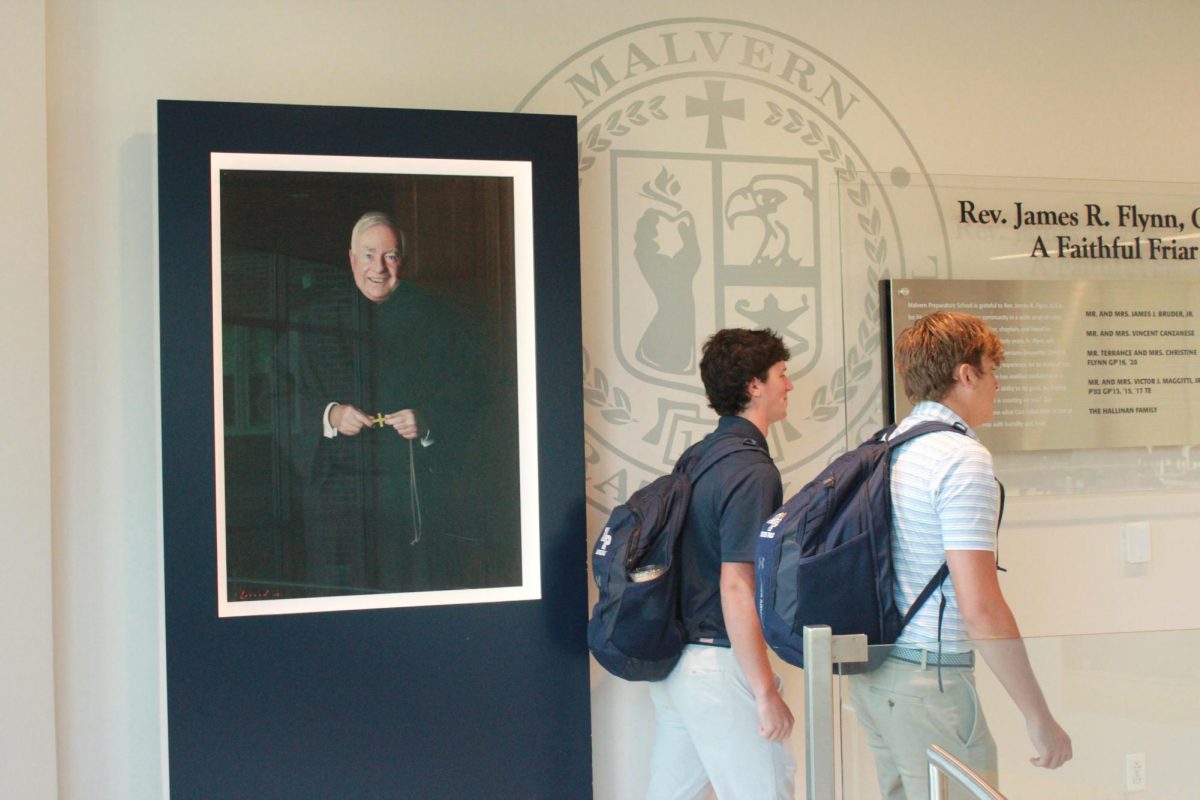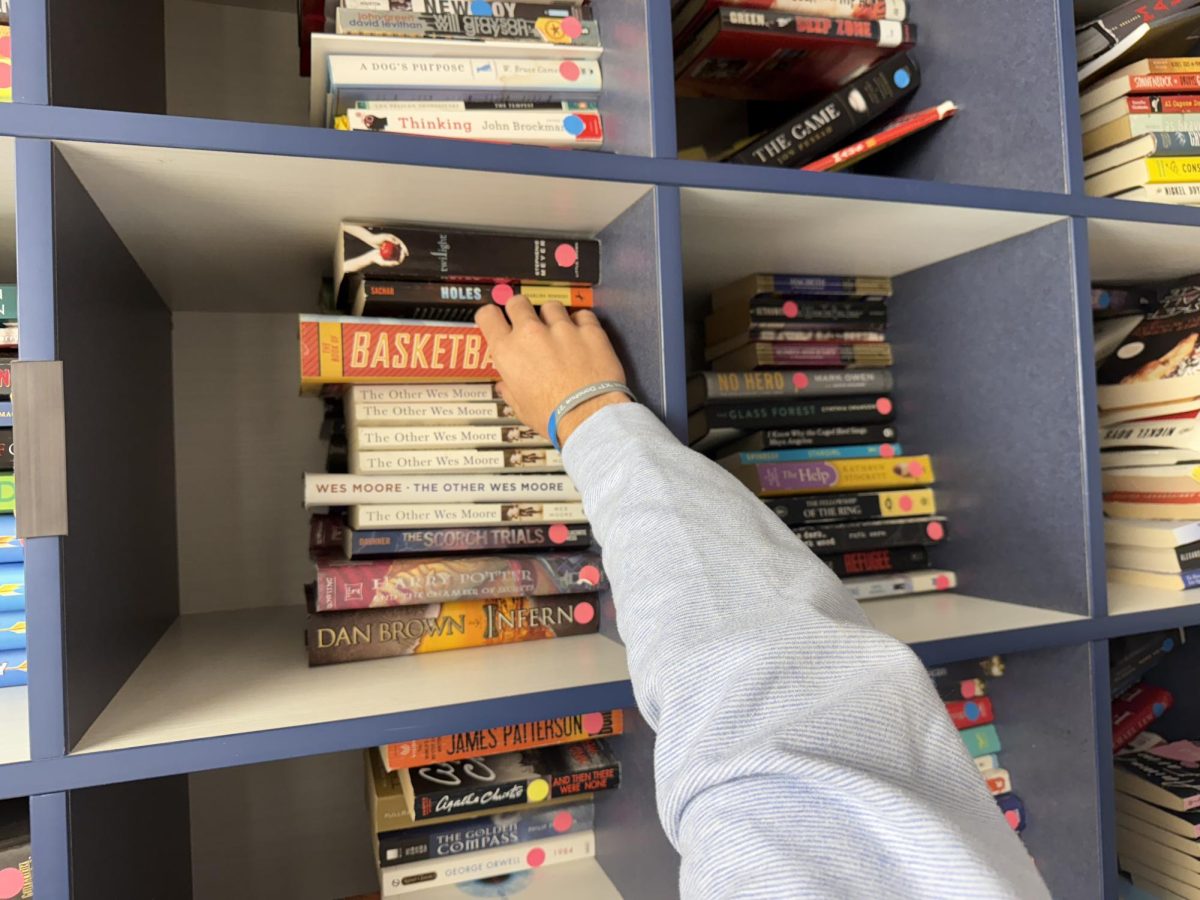Community Time moved to the afternoon this year, aiming to stop students from doing last-minute homework.
 Malvern’s fourth schedule in the last four years has moved a shortened Community Time to the afternoon. Some teachers are trying to teach freshmen how to use it effectively.
Malvern’s fourth schedule in the last four years has moved a shortened Community Time to the afternoon. Some teachers are trying to teach freshmen how to use it effectively.
Social studies teacher Mrs. Pam Whitney, who led on the faculty committee to revise the schedule along with English teacher Mrs. Susan Giordani, said that the way Community Time was being used for the previous two years was not according to design.
“When we first started with Community Time, everyone saw it as an extra study hall, and not really what it was meant for which is a time to meet with teachers, a time to work together— as groups in community,” she said. “We’re trying to change a mindset.”
The change in mindset was to stop students from doing homework that was due later each day during Community Time, according to Whitney.
“The design was, ‘How about we move Community Time towards the end of the day?’” Whitney said. “Students would then be getting the work done that they got during that day. They can go back and ask teachers questions during that time.”
Head of the Upper School Mr. Ron Algeo said he previously met with Independent School Management, a consulting firm for independent schools like Malvern. One of their recommendations was to have breaks in between classes to limit circumstances when students have multiple classes in a row.
Students now have break between first and second period, lunch during third period, and Community time between fourth and fifth period.
Another change that came with the updated schedule is that freshmen must report to their homerooms during Community Time. Freshmen teachers are proctors in their rooms, and students must ask for a pass to leave for club meetings or other activities.
“Part of the problem [with Community Time last year] is that students don’t know how to be effective with their time, and that’s why we have freshmen down in the area where every teacher that’s down there teaches freshmen,” Whitney said. “The whole idea is that they use that time wisely to meet with their teachers.”
Whitney said that the change helps keep fewer students in the Learning Commons because freshmen are required to have a device this year and don’t need to check out chromebooks from the Learning Commons.
“The point is teaching the freshmen how to use these free periods throughout the day as as a way to productively get some work done during the day instead of being kind of free range and do whatever their hearts and souls desire,” freshmen English teacher Mr. Jason Sammartino said. “We’re trying to use this half hour everyday as a time to come in, maybe see a teacher, definitely get some work done.”
Algeo said the change helps build a greater sense of community among freshmen, and Dean of Students Mr. Tim Dougherty said it helps him find certain freshmen when he needs to.
“Some guys– a lot of guys– are just messing around or staring at the wall, but a lot of times guys are being very productive and showing signs of success,” Dougherty said.
Freshmen Liam Sullivan likes using Community Time, but doesn’t think the system is perfect.
“[Community Time] is a good time to get all my homework done, and if I don’t have homework, then I can just hang out and chill and have downtime,” he said. “I think that we should be able to leave because if we complete our assignments we should be allowed to go out and have downtime.”
Freshman John Mankowski also would like to have more freedom during Community Time.
“I’d be just as productive if I wasn’t forced to be in a homeroom,” he said. “It’s just really annoying, just having to be in a homeroom.”
Mankowski said there were times when the program has made him less productive.
“If one person is not doing work— if they’re talking— I can’t really focus on anything,” he said.
Whitney recognizes that some students may not like the change and would prefer more changes, but she focused on how students can benefit from it.
“Why would you take your work home when you can get it done here?” she said. “Who doesn’t want to do that?”
Although upperclassmen are not required to be in a specific location during Community Time, they also have mixed reactions to the schedule changes.
“I think first Community Time [last year] was more productive. I think having it split up, you can’t do work. You can’t do homework if you need it done,” senior Amir Webb said. “It’s not conducive to work.”
“[The Learning Commons is] probably more crowded than it was [last year],” Webb said. “At Community Time, now that there’s no break, you have more people in here at once… It’s one big mess.”
Senior Jack Waite appreciated the changes.
“I do actually like it. It gives me a little bit more time to focus on things at different periods,” he said. “I especially like it being after fourth periods because one of my biggest problems with Community Time after first period was that I couldn’t do any homework I had for that day in school because I didn’t have any of the classes assigned homework until afterwards.”
Algeo recognizes that there is feedback and is open to making further changes.
“I’m listening… Should we make the afternoon Community Time longer? Is there another way for us to design it? Is it something that is just a process of getting acclimated to and in another couple months the students like it better, only being half an hour?” he said. “I’m open to all those possibilities.”
In an email sent to the upper school on October 5, Algeo announced that the cafeteria will be serving food during Community Time and after school from 3:00 to 3:30.
Algeo said in the email that the cause of the change was students’ feedback.
“It is because many of you have come forward in a respectful manner asking for some help. We have heard from many of you that you are hungry in the afternoons, so this is one way we would like to help,” he said. “I am bringing this to your attention to emphasize the point that your respectful feedback is not only important, but helpful.”
Story produced in senior Journalism and Media Literacy elective class.












